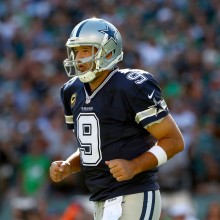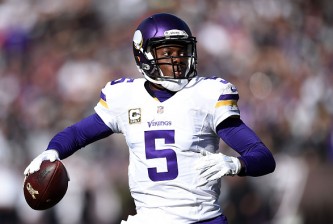The ability to move the ball through the air has defined the NFL over the past decade. Teams such as the Patriots, Colts and Saints have thrived by attacking opponents with very little support from the running game. The new culture of “pass and stop the pass” has pushed teams to reach for quarterbacks they probably had no business drafting, especially in the first round.
We’ve seen a number of unmitigated flops in the past five years. Christian Ponder, Blaine Gabbert, Josh Freeman, Mark Sanchez and Jake Locker are all clinging to life in the NFL. Even top prospects like Robert Griffin III are facing uncertainty heading into the 2014 campaign.
Meanwhile, some teams have opted to bypass taking an all-in bet in favor of loading their rosters with as much talent as possible and tossing on a good, but not great, quarterback that will get them from point A to point B. This strategy is similar to buying a used car instead of going for the brand new Mercedes. Sure, it’s not as flashy, but it usually gets the job done, and if it does break down, it’s no big deal because it didn’t cost that much in the first place.
There’s no denying that there’s a negative connotation that comes with starting a stop-gap (for lack of a better term) quarterback. Putting him under center isn’t supposed to be a long-term solution. Still, the move often buys teams time and options.
Because I’ve covered the Jaguars for a few years now, we’ll use them as an example of what could go right and wrong with stop-gap quarterbacks. If we backtrack to 2007, the Jaguars were starting David Garrard, a quarterback that was solid when he was in form, but he was never and elite passer. His act of putting together seasons that hovered around the .500 mark eventually pushed the franchise to draft Blaine Gabbert with the tenth overall pick in the 2011 draft.
That was a mistake.
Heading into draft season, Gabbert was among the highest rated quarterbacks, but his stock slid through the offseason. The Jaguars decided to pull the trigger and hoped to bring in a franchise passer with Gabbert. Obviously, the plan backfired, and the team spent three seasons floundering with Gabbert before trading him to the 49ers.
Now the Jags are back at square one, ready to roll with Chad Henne. Much like Garrard before him, Henne is nothing special. He won’t pick his team up and carry them to the playoffs with little outside help like Tom Brady or Peyton Manning could, but he also won’t toss games away with incompetent play most of the time.
In addition to giving the Jags a decent quarterback to work with, Henne’s presence allows the Jaguars to draft a developmental quarterback in the second, third or fourth rounds of the draft. By doing this, the Jaguars’ initial investment in a potential franchise passer is much lower, and their position remains stable. If they decide their developmental player isn’t able to fill the role of a franchise quarterback, they can simply bring in a different prospect, all the while adding top talent at other positions.
Even though teams would far prefer to land a top-tier franchise quarterback, sometimes the smart money is also the boring money. Drafting a high risk, high reward player is a gamble at best. Considering the depth of young passers available in the draft, look for teams to stick with the safer bet of using a stop gap quarterback to get them through a season or two of developing a young passer instead of swinging for the fences with a top ten draft pick.























